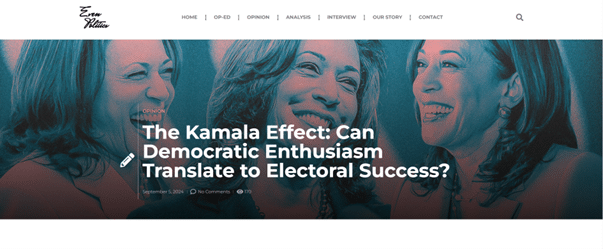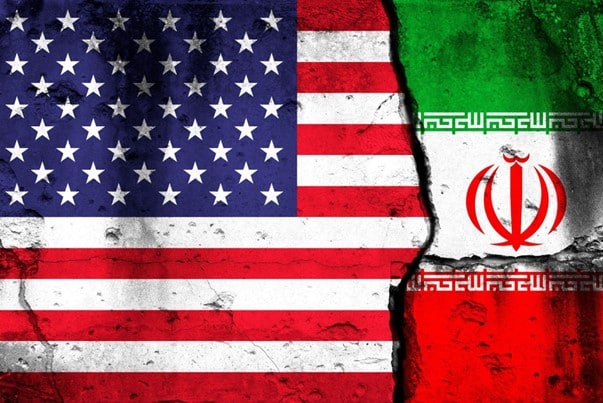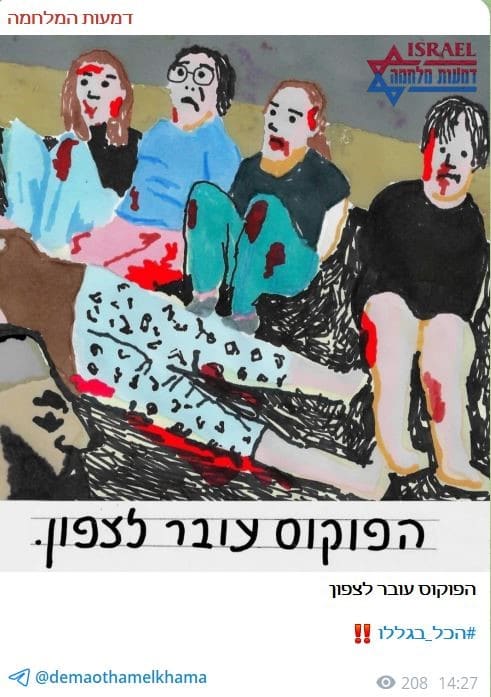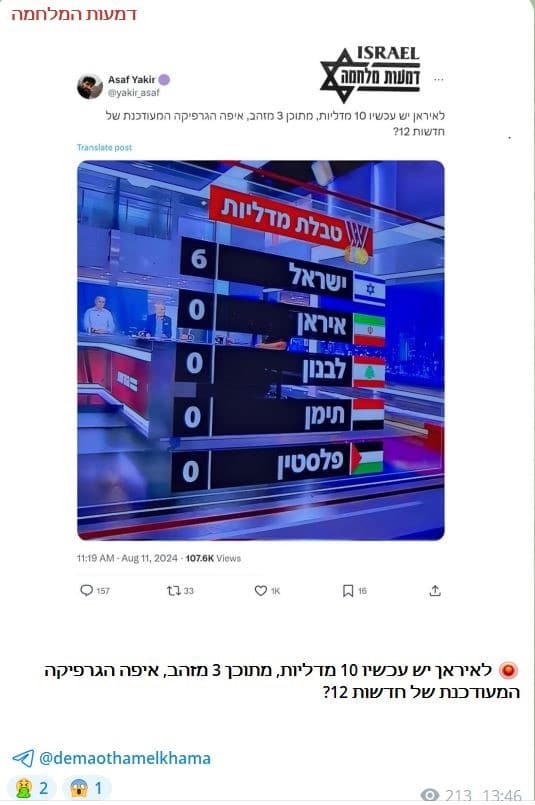
In recent years new concepts have been emerging in the global discourse, relating to the psychological warfare both within the cyberspace and beyond. Concepts such as Fake News, Disinformation, and Deep Space have entered popular jargon and brought to light the gargantuan influence games raging between various global forces. One of those is Iran.
Iran has been waging ongoing sophisticated disinformation campaigns, aiming to sway public opinion against its enemies – namely Israel and the US. But Teheran can take a page out of the playbook of an old hand in sowing disinformation to influence public opinion – Russia.
For instance, Iran is attempting to intervene and influence the results of the upcoming presidential elections in the US. The Washington Post reported that the artificial intelligence (AI) developer OpenAI, announced in August 2024 that it had intercepted attempts by Iranian sources to use its famous chatbot ChatGP to manufacture online content to sow discord and widen the polarization in US society to influence the results of the elections this November. The network disseminated disinformation regarding both candidates – Democratic Kamala Harris and Republican Donald Trump. The fake news aimed to increase the social discord in the United States by stoking social controversy. The Iranian network produced content mainly in the topic of the war in Gaza, LGBTQ rights and of course, the two presidential candidates.

According to intel in the US, the Iranian network, known as “2035-storm” operated a number of new websites and social networks. Iran’s primary objective in the information ecosystem is to stoke existing controversy in American society on particularly sensitive issues, propagate social chaos and undermine America’s political and social order from within. Presumably, even if the Iranians are able to foment discord even on a small scale, they will have considered this testimony to the long-standing claim championed by Iran that democracy is a flawed Western concept.
It seems that one popular topic utilized by the Iranian network is the current war in Gaza, which it frequently addresses. Thus for instance, it operates a website under the name Even Politics.com in which it publishes content on the ongoing Gaza war, the influence of religious groups and threats against American democracy. It is evident that most of the content of the site is biased against Donald Trump.
According to many experts in the field, this method of disseminating disinformation is not the domain of Iran, and its attempts to sway the elections in the US seems to reflect the methodology employed by Russia, which operated a troll farm – an organized group engaging in the dissemination of disinformation – to flood the social networks with divisive content, ladened with disinformation. The telltale characteristic of the Russian methodology apparent in the Iranian activity in the cyber ecosystem is the targeting of groups on both sides of the political divide in the US. The disinformation Iran uses aims to radicalize the political discourse, deepen the social discord and undermine the fabric of society in America.
Iranian efforts to influence the presidential elections in the US were evident already in 2018, when they set up a sophisticated system of fake accounts supposedly belonging to US House candidates and journalists. The Iranian campaign, which began in 2018, scaled up following the elimination of Qassem Soleimani, former Qods Force commander in Iraq in January 2020, under the order of then President, Donal Trump. Thus for instance, two Iranian nationals were charged in the US of involvement in the cybernetic disinformation campaign targeting American voters ahead of the 2020 elections. Iranian perpetrators also sent threatening emails to voters during the 2020 campaign. Iran also used websites such as Even Politics to try and sway the 2022 midterm elections as well.
In addition to its use of social platforms, Iran utilizes other cyber instruments such as hacking and phishing, to try and throw the November elections into disarray. On August 10, officials in Trump’s campaign accused Teheran of hacking parts of its internal communications, leading to a federal investigation in the US. On August 19, the American federal Intelligence officials released an assessment confirming that there was “increasingly aggressive Iranian activity during this elections cycle”, which included “the recently reported activities targeting former President Trump’s campaign”. The intelligence assessment came after U.S. Director of National Intelligence Avril Haines suggested that Tehran’s efforts to influence the U.S. election were likely “because Iran’s leaders want to avoid an outcome that they believe would increase tensions with the United States,” i.e. Trump.

Iranian disinformation targeting Israel
Iran’s hostile interference activity in the cyberspace targets Israel as well. In the wake of October 7, Iran stepped up its activity aimed at spreading disinformation among the Israeli public. It was also recently revealed that a Telegram channel disguised as pro-Israel, “Tears of War”, has published dozens of messages since the beginning of the war, including heartbreaking posts pushing for the return of the hostages from Hamas captivity in Gaza. The posts were designed to convey a clear message: the Israeli government is to blame for the ongoing suffering of the hostages, and Prime Minister Benjamin Netanyahu’s decisions were to blame for undermining prospects of a ceasefire. These are just a few examples of how this channel, along with others, is trying to deepen the discord in Israels’ political-social discourse on loaded issues that concern the Israeli public, such as the hostages and the ceasefire.
In all likelihood, the Tears of War account is operated by someone connected to Teheran and is used as a bellow with which to inflame tensions in Israel’s public. Through this and other channels, the Iranians are undermining the official Israeli narrative regarding the issue of the hostages and the war in Gaza in order to influence and manoeuvre the campaign according to Iranian interests. However, this devious campaign is just part of the picture of Iran’s network of activity in the information ecosystem against Israel.


From 2021 to date, Iran has been operating a widespread campaign in the digital ecosystem aiming to psychologically manipulate the Israeli public and further tear at the social and ideological conflict, particularly evident following Israel’s Operation Guardian of the Walls that year. Tehran’s ultimate goal is to turn the public in Israel against the government, to undermine the government and affect anarchy that would serve to weaken Israel.
To this end, Iran employs advanced tactics and methods, such as digital email campaigns, social media landing pages, and the dissemination of deep fake AI-generated content designed to reach more accurately segmented audiences and increase engagement.
The Iranian activity in the cyberspace has three discrete phases, each with specific objectives:
The escalation of tensions between the various groups from all sides of the social divides in Israel, e.g. religious groups and the LGBTQ community; religion and non-religious etc. The next step is fomenting pollical discord between the right and left of the political map. The third stage, of which Iran is presently engaged in, is to saw discontent in the Israeli public with regards to the Israeli government’s response to the actions of Hamas.
Teheran’s expansive use of the digital ecosystem is intended to create a skewed perception of reality among Israel’s public to the extent that they cannot discern between fact and fiction; victim and aggressor. Thus, the Iranians try to swamp the web with disinformation and distorted intentional narratives by exploiting – often unwitting – local resources to spread this content, amplified by of local content in leading channels.
Case in point: last May, the abovementioned “Tears of War” telegram channel paid for sponsored promotion on a Telegram channel of an Israeli blogger, Daniel Amram, called “Uncensored Daniel Amram”, which has 378 thousand followers. The posts on Daniel Amram’s channel gave the Iranian’s access to the mobile devices of thousands of Israeli followers and disseminate content calling for the cessation of the war. The use of local channels to promote fake narrative through such content is one instrument Tehran utilizes to saw confusion in the Israel’s public, obscuring the boundaries between what is in effect occurring and cyberspace. The disparity between the misguided perception and reality provides a convenient platform for mind engineering and influencing campaigns and for collecting data on followers, even for the recruitment of civilians for their cause. Iranian cyber networks use fake accounts to contact Israeli civilians by sending them private messages on social networks such as Telegram, WhatsApp etc. The use of content-intensive networks, which are full of fake accounts the respond to or upload posts lend a veneer of credibility that allowד spreading messages to users, who are contacted through private messages, unaware that they are being recruited.
On January 2024, the Israeli General Security Services announce that fake accounts operated by an Iranian network posted fake job offers and surveys to recruit Israelis to carry out various tasks. These privately-sent requests included, among others, prompts to hang signs with slogans phrased by the Iranians, surveys, photographing protesters and so on. The Iranian network operated to recruit Israelis by deceit, and to use them for purposes of intelligence collection, such as photographing houses of anti-Iranians and individuals belonging to the Israeli security establishment.
In conclusion, it seems that the Iranian networks operating in the Israeli and American digital ecosystem have a deep understanding of the public discourse of both publics. The use of the various social networks and other means of dissemination, such as emails, is spreading by exploiting the ease with which massive numbers of users can be reached privately to deceitfully collect intelligence.
Furthermore, it seems that the Iranian methods of operations are becoming increasingly streamlined and Tehran’s influencing campaigns are able to hit upon exposed nerves in the social rift both in America and Israel. Moreover, the daily interaction with citizens affords Iran with comprehensive social insights, enabling it to analyze the social discourse and accordingly modify the messages it seeks to promote and advance its strategic objectives through instant messaging to users.
The US is heading toward its presidential elections, while Israel is in a state of a multi-theater war, and events are developing at breakneck speed. A large part of the population uses social networks to stay abreast on current events, mainly on Telegram and -X (Twitter). This increased dissemination of content is a fertile ground for Iran’s frequent disinformation and mind engineering campaigns.
This sophisticated method of spreading messages and content via social networks serves Iran’s long-term strategic goals. The disinformation foments distrust in the governing institution of its enemies and disintegrate their societies – Israeli and American – from within.
Additionally, all this cements Iran’s status as a powerful player in the digital ecosystem and offensive cyber, increasing its ability to collect intelligence and hurt civilians. Teheran’s deep understanding of the main issues of social discourse in Israel, and its ability to influence sentiments in Israel’s public reflect an escalation in its ability to orchestrate influencing campaigns and spark social discord and controversy.
Moreover, the Iranian disinformation campaigns are greatly accelerated with the help of artificial intelligence, which they even use to produce deepfake videos, increase the quality of their fake content and mislead public officials, media outlets and many citizens. Teheran’s use of fake, manipulative content produced by artificial intelligence is expected to further expand, to increase the output and dissemination. The use of artificial intelligence will also contribute to the fine-tuning of messages to increase their influence on the public discourse, in Israel, the United States, or any other country Teheran considers its enemy.
Examples of posts from the “tears of War” Telegram channel
Many of the channel’s posts contain the hashtag #Its All His Fault! referring to Prime Minister Benjamin Netanyahu, aiming to widen the divide in Israel’s society and increase opposition to the government and its system:

This is one of many posts on the ‘Tears of War’ Telegram channel with the hashtag #It’s All His Fault, aiming to increase social controversy and opposition to Prime Minister Benjamin Netanyahu and the Israeli government through an image insinuating the situation of the hostages in Gaza, depicting a drawing of the radar operators while being kidnapped from their base on October 7. The post aims to counter balance the shift of attention to the fighting in the northern arena against Hezbollah and Lebanon.
Some posts focus on Iran, suggesting that the channel’s operators are of Iranian source. Below is an example of such two posts published during the 2024 Paris Olympics, emphasizing that Iran has won more medals than Israel:







